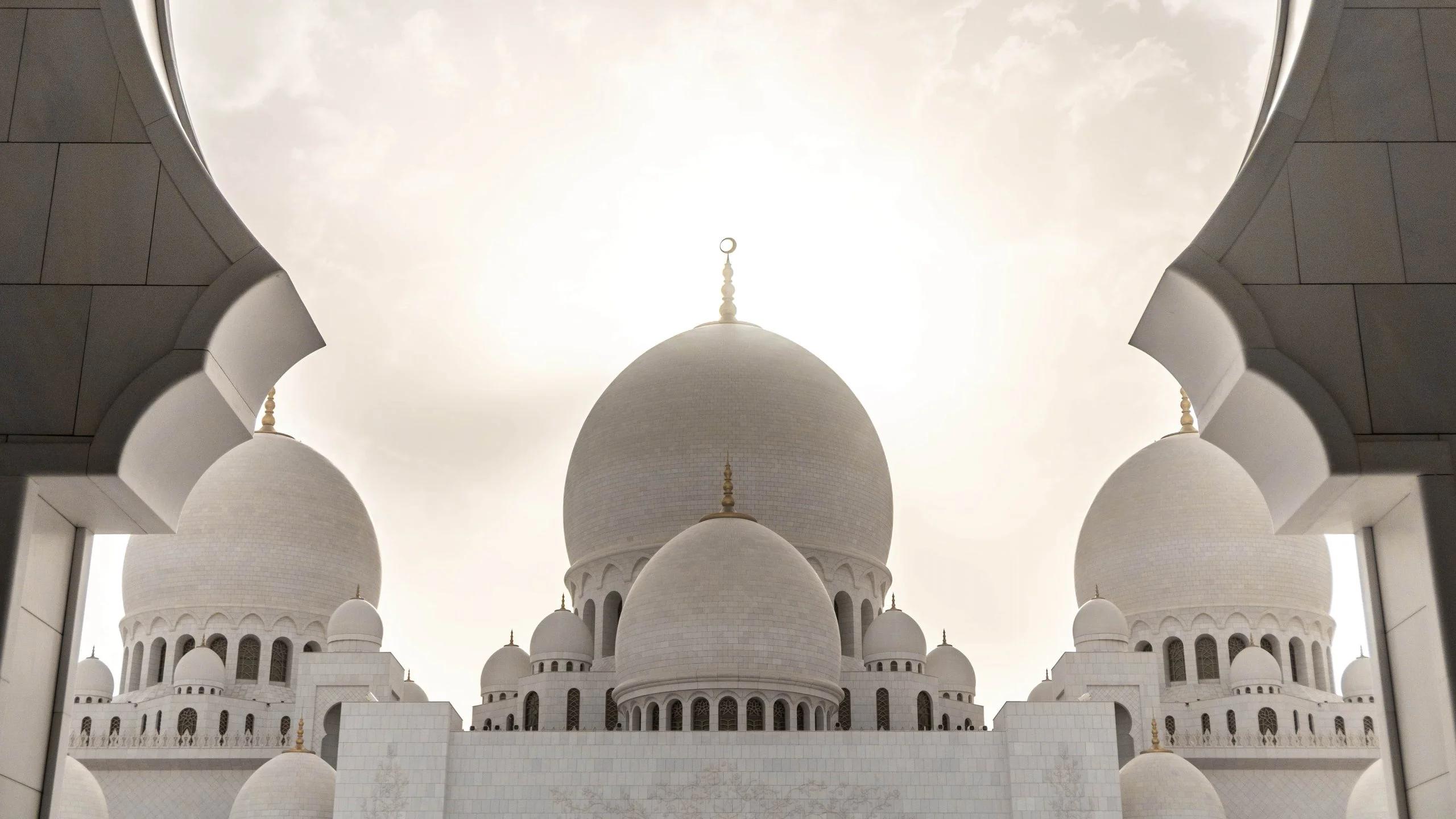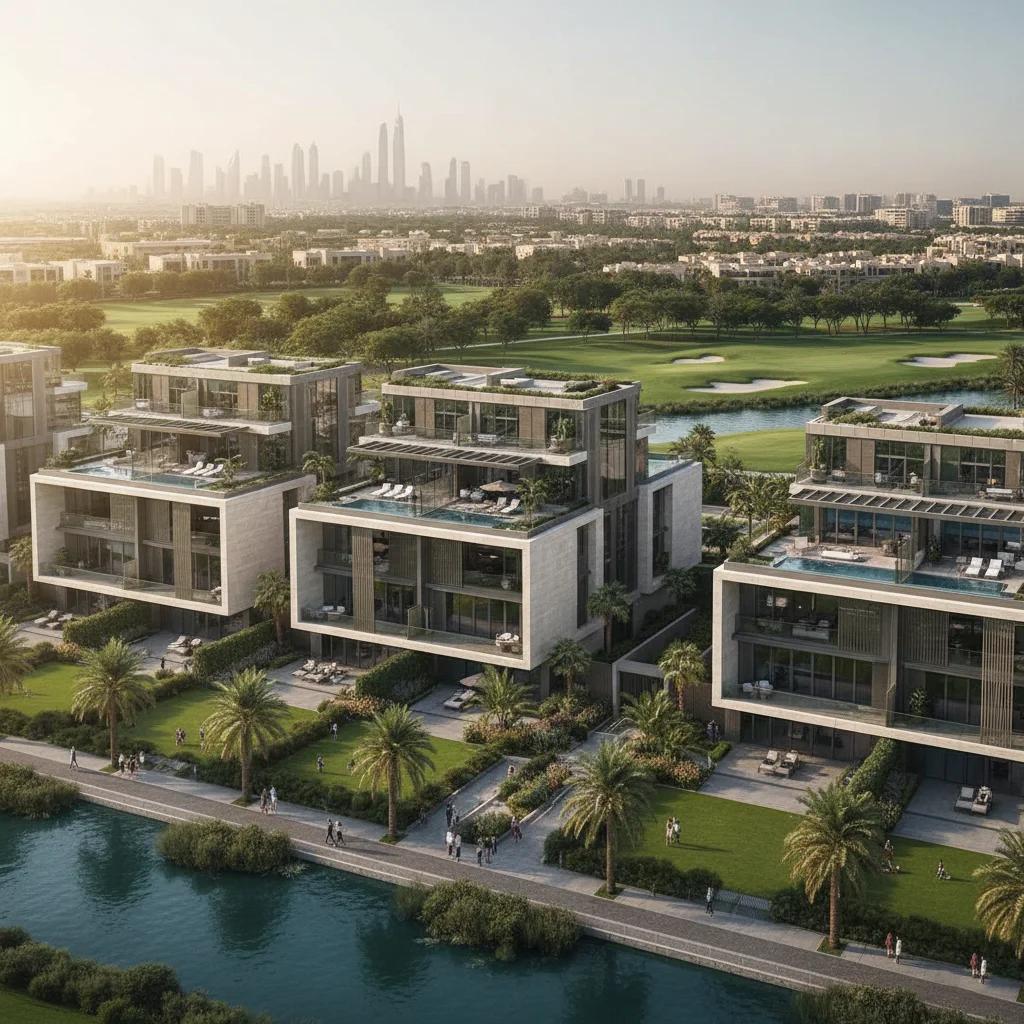
The Beautiful Architecture Of Sheikh Zayed Grand Mosque Abu Dhabi
The Sheikh Zayed Grand Mosque, which stands majestically at the gateway to Abu Dhabi City Island as a tribute to the founder’s vision, can be seen clearly from all three principal bridges connecting the island to the mainland: the Maqta, Mussafah, and the Sheikh Zayed Bridge. The mosque is truly an architectural marvel with its beauty. Given that the late Sheikh Zayed bin Sultan Al Nahyan, the first President of the UAE, is buried right next to the mosque, the mosque’s important geographic placement is a symbolic manifestation of the emotional connection that all UAE citizens have to it.
Important Architectural Features
- The mosque’s 82 domes, the largest of which stands in the centre of the main prayer hall, are perhaps its most striking feature. The domes have gold-glass mosaic-decorated crescent-shaped finials, onion-shaped “crowns,” and pure white marble cladding.
- The design of the minarets fuses the vast and varied Islamic world into a single conclusion of art and beauty by fusing Mamluk, Ottoman, and Fatimid forms.
- Developing the art of ornamentation through the use of multi-coloured marble to create unheard-of artistic spaces employing natural colours, as well as the creation of complex methods for the embellishment of crowned columns. Instead of being at the top of the columns, the crowns are at the base. This remarkable method is new to Islamic architecture.
- Giving emphasis to the use of colour as a creative tool in original artistic forms. The walls, columns, and carpet all have complementary colours that work together to transform the entire mosque into a work of beauty and a symphony of hues.
- Another important feature is the artistic glasswork. Mosaic, carved and sand-blasted glass displays traditional Islamic designs of symmetry and repetition.
Minarets
The mosque includes four minarets, each standing at the height of roughly 106 meters. Three different geometric shapes make up each minaret. The first is a square that serves as the base of the minaret. Its architecture combines elements of Mameluke, Moroccan, and Andalusian traditions.
The mameluke period is represented by the second section of the minaret’s octagonal shape (13th to 16th centuries). The third section has a cylinder-shaped shape, which is an Ottoman-era design feature (14th to 20th centuries). The gold-glass mosaic-covered chandelier’s crowning lantern dates to the Fatimid dynasty (10th to 12th centuries).
Carpets
The largest hand-knotted carpet in the world may be found in the main prayer hall. Dr Ali Khaliqi, a third-generation carpet weaver and artist, created the elaborate Islamic medallion design.
5,700 square meters of the single-piece, mostly wool carpet were hand-woven by about 1,200 workers. Eight months were spent on the design and twelve months were spent on the knotting, totalling two years for the project.
Chandeliers
Seven crystal chandeliers by the Munich, Germany-based Faustin can be found in the mosque. The biggest is 10 meters in diameter, 15 meters tall, and 12 tons. The main prayer hall also has two smaller variations of the same design. Each of these is eight tons.
In the foyer doors encircling the mosque are four blue chandeliers of a similar style and size. The largest weighs about 2 tons and is located in the main foyer entrance.
Interesting Facts About The Grand Mosque
Materials from several countries were used to construct the mosque.
Sheikh Zayed Mosque was built between 1996 and 2007 using supplies from all over the world. Yousef Abdelky, a Syrian architect, created it. The mosque was constructed utilizing natural materials by about 3000 individuals and 38 subcontractors. These components were selected for their durability over the long term. Numerous items were brought from a variety of nations, including Egypt, New Zealand, the UK, India, Germany, Morocco, China, Italy, Turkey, Pakistan, Iran, North Macedonia, and Malaysia. Gold, ceramics, crystals, and more were utilized in the construction of the Sheikh Zayed Mosque.
Although it may seem clear, we’re discussing artificial light here. It is a remarkably original lighting setup. Each night, the cloudy blue-grey projection from the 22 light towers varies to reflect the moon’s phase. In order to witness this in action, you might want to schedule a visit to the Sheikh Zayed Mosque in the evening if you’re travelling to Abu Dhabi.
The Sheikh Zayed Mosque can accommodate more than 40,000 worshipers (at the same time)
The Grand Mosque can accommodate over 41,000 worshipers at once due to its enormous dimensions. 10,000 people can fit in the main prayer hall alone! The mosque is an important centre of worship for Jumu’ah, or Friday Prayer, and regular prayer. This occurs every Friday shortly after noon. You will hear the call to prayer around 10 to 15 minutes before the Jumu’ah is scheduled to begin if you are nearby.
The primary prayer hall is supported by 96 pillars.
When constructing the Sheikh Zayed Mosque, no corners were cut. Each of the 96 pillars features a lovely floral pattern with exquisite mother-of-pearl accents. Just walking through them is breathtaking!
The Sheikh Zayed Mosque has more than 80 domes.
Because of its many domes, the mosque is recognizable and famous. Actually, there are 82 of them, the biggest of which is in the centre of the main prayer hall. This one is enormous, standing 85 meters high and 32.8 meters in diameter (279 ft). The domes are decorated with traditional Moroccan art.
Entry And Timing
Entry into the mosque is completely free. Except for prayer time, you won’t be allowed inside the mosque. Just make sure you are wearing respectable clothing. Men and women need to wear clothes covering the shoulders and below the knee. No sleeveless shirts are allowed. The women will need to wear an abaya to enter the mosque. Appropriate garments are available to rent before you enter the mosque for men and women.
Visiting Hours
| Saturday to Thursday | 9:00 am to 10:00 pm. Last admission at 9:30 pm |
| Friday | 9:00 am to 12:00 pm. Last admission at 11:30 pm |
| 3:00 pm to 10:00 pm. Last admission at 9:30 pm |
Final Words
In conclusion, the Sheikh Zayed Grand Mosque is an incredible work of architecture and engineering and is a beautiful place of worship. It is a fitting tribute to the late Sheikh Zayed bin Sultan Al Nahyan and is a must-see for anyone visiting Abu Dhabi.
Have you ever visited this magnificent structure before? What other things amazed you while viewing its architecture? You can share your answers in the comment section down below.
If you have not visited it, you can tell us which features sounded the most surprising to you while reading the article. You can also tell us which things you would like to view the most once you visit this grand mosque. As it is always, we cannot wait to hear from you all.




